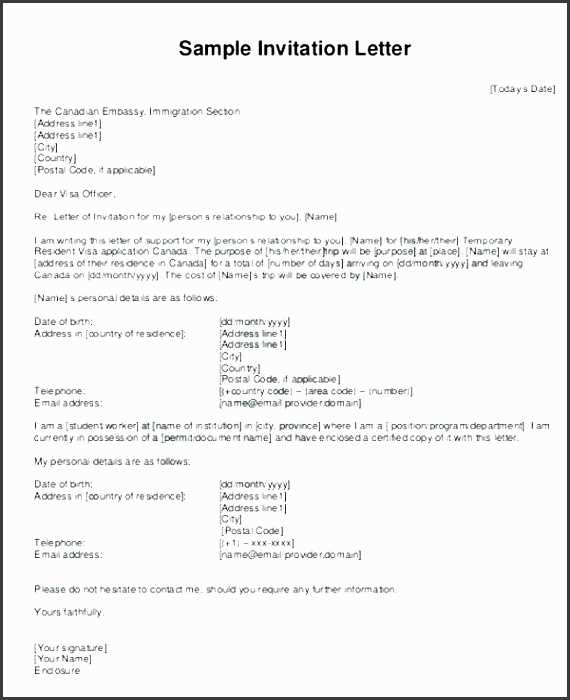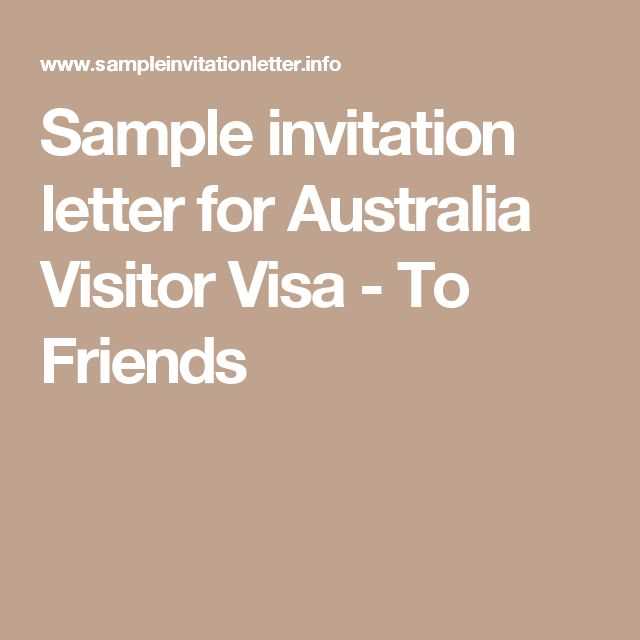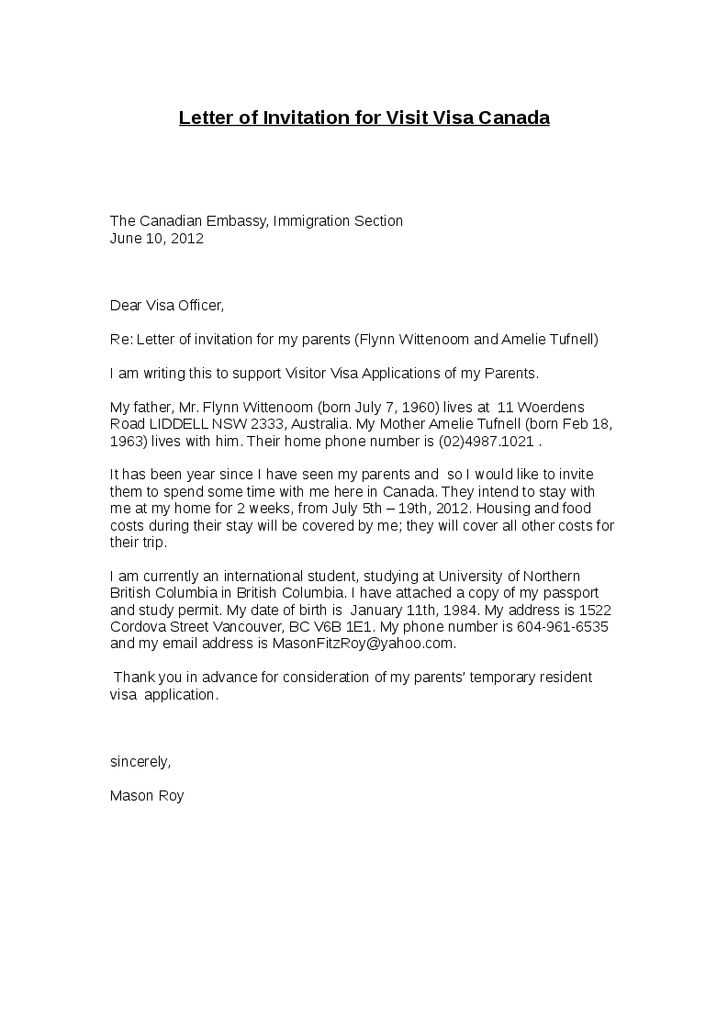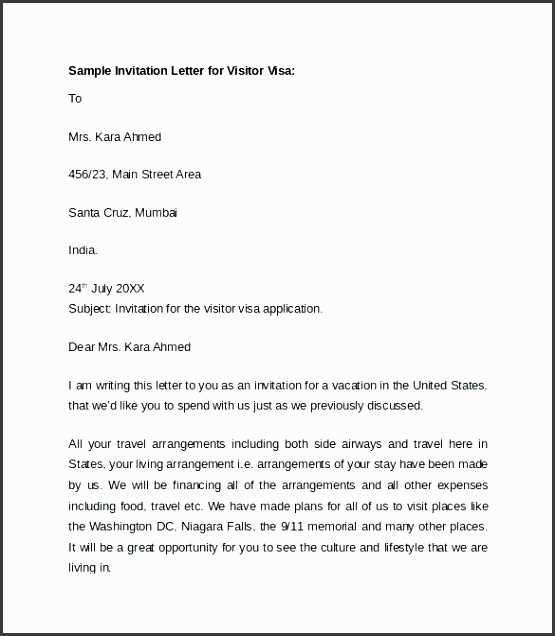Australian Visa Invitation Letter Template Guide

When planning to invite someone from abroad to visit you, a formal request document is often necessary. This document serves as a crucial part of the process, helping authorities assess the reason for the visit and ensure everything is in order. It contains vital information that supports the traveler’s application for entry into the country.
Key Elements to Include
For a well-structured request, several components should be incorporated. These include:
- Personal Details: Full name, date of birth, nationality, and contact information of the invitee.
- Relationship Clarification: Explanation of how the invitee and the host are connected.
- Purpose of the Visit: Clear description of the reason for the stay, whether for tourism, family, or business.
- Dates of Stay: Specific duration of the visit and any relevant travel dates.
- Host’s Information: Full name, address, employment details, and citizenship status of the person issuing the request.
Steps to Tailor Your Request
While the format remains fairly consistent, personalizing the request adds a sense of authenticity. Ensure you address the specific relationship and nature of the visit. If it is for a special event, such as a wedding or holiday gathering, mention these details. Customizing the document to reflect the invitee’s personal circumstances helps strengthen the application.
Common Errors to Avoid
It’s crucial to avoid mistakes that could delay the process or create confusion. Some common errors include:
- Incorrect Information: Ensure all details are accurate, especially names, dates, and addresses.
- Incomplete Documentation: Missing supporting papers can lead to immediate rejection. Be sure to attach any necessary evidence such as proof of accommodation or financial support.
- Vague Purpose: A general statement of intent is insufficient. Provide specific reasons for the visit and the arrangements made.
Additional Tips for a Strong Request
To make your document more compelling, consider including the following:
- Clear Structure: Use headings and short paragraphs for easy readability.
- Politeness and Formality: Ensure the tone remains professional, polite, and respectful throughout.
- Supporting Evidence: Attach documents that further support the visit’s legitimacy, such as travel itineraries or financial statements.
Understanding the Process of Requesting a Visit
When inviting someone from another country to visit, a formal document may be required to support their entry request. This document acts as a guarantee for the authorities, outlining the nature of the visit and confirming the arrangements made by the host. The key to an effective document is clear, accurate information that helps the officials assess the request and ensures the visit is properly documented.
What Is a Formal Request for Entry?
A formal request for entry is a document created by a resident inviting a guest to stay temporarily. It includes information about the host’s identity, the guest’s travel plans, and the purpose of the visit. This document is used to demonstrate that the host is willing to accommodate the guest and take responsibility for their stay.
Key Elements to Include

To create an effective request, it is essential to include the following details:
- Host and Guest Information: Full names, birthdates, contact information, and citizenship status.
- Purpose of Visit: Clearly state why the guest is coming, whether for tourism, family visits, or business.
- Accommodation Details: Specify where the guest will stay and the arrangements made for their comfort.
- Travel Dates: Provide the expected arrival and departure dates.
- Host’s Commitment: Ensure the host outlines their role and the responsibilities they are taking on during the guest’s stay.
Including these details ensures the request is comprehensive and clear to the authorities evaluating the application.
How to Personalize Your Request
To make the document stand out and appear genuine, it’s important to personalize it. Specify the relationship between the host and guest, and include any relevant details about why the visit is important. Mention special events, such as a wedding or holiday, if applicable. This personal touch makes the request more convincing and relevant to the authorities.
Common Mistakes to Avoid

Some common errors that could weaken the request include:
- Incomplete Information: Make sure all sections are fully completed and there are no missing details.
- Inaccurate Data: Double-check all personal details, such as names, dates, and addresses.
- Unclear Purpose: Vague descriptions about the purpose of the visit can lead to confusion and delay.
The Significance of Formal Requests

A well-written request not only helps secure approval for the guest’s entry, but it also builds trust with the authorities. It ensures that all necessary information is presented clearly and can prevent misunderstandings or delays in the approval process.
Best Practices for a Solid Request
To craft a strong request, focus on the following:
- Clear and Precise Language: Use simple, direct language that is easy to understand.
- Thoroughness: Ensure every detail is provided and that supporting documentation is attached.
- Formal Tone: Maintain a professional and respectful tone throughout the document.